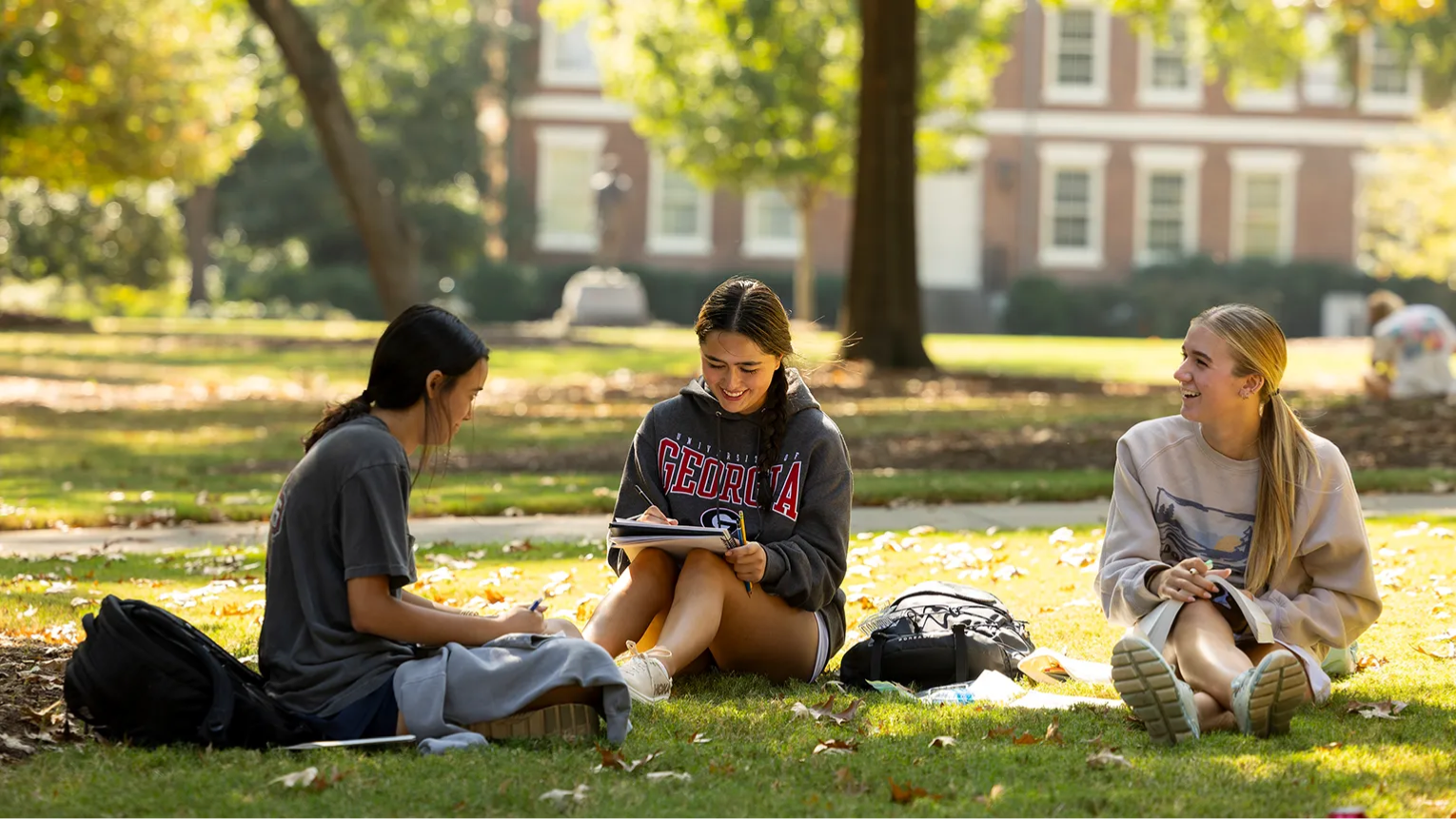
At the University of Georgia, our rich tradition begins with providing an exceptional education and pursuing a brighter future for our world. As the birthplace of public higher education in America, the University of Georgia has inspired generations of entrepreneurs, researchers, and citizens to change the world since its founding in 1785.
The University of Georgia, a land-grant and sea-grant university with statewide commitments and responsibilities, is the state’s oldest, most comprehensive, and most diversified institution of higher education. Its motto, “to teach, to serve, and to inquire into the nature of things,” reflects the University’s integral and unique role in the conservation and enhancement of the state’s and nation’s intellectual, cultural, and environmental heritage.
The University of Georgia shares with the other research universities of the University System of Georgia the following core characteristics:
With its statewide mission and core characteristics, the University of Georgia endeavors to prepare the University community and the state for full participation in the global society of the twenty-first century. Through its programs and practices, it seeks to foster the understanding of and respect for cultural differences necessary for an enlightened and educated citizenry. It further provides for cultural, ethnic, gender, and racial diversity in the faculty, staff, and student body. The University is committed to preparing the University community to appreciate the critical importance of a quality environment to an interdependent global society.
As a comprehensive land-grant and sea-grant institution, the University of Georgia offers baccalaureate, master’s, doctoral, and professional degrees in the arts, humanities, social sciences, biological sciences, physical sciences, agricultural and environmental sciences, business, ecology, engineering, environmental design, family and consumer sciences, forest resources, journalism and mass communication, education, law, pharmacy, public health, social work, and veterinary medicine. The university is also home to the Augusta University/University of Georgia Medical Partnership.
The University attracts students nationally and internationally as well as from within Georgia. It offers the state’s broadest array of possibilities in graduate and professional education, and thus a large minority of the student body is post-baccalaureate. The predominantly Georgian undergraduate student body is a mix of highly qualified students originally admitted as first-year students and selected transfer students principally from other University System institutions.
With original scholarship, basic and applied research, and creative activities constituting an essential core from which to draw, the impact of the land-grant and sea-grant mission is reflected throughout the state. Cooperative extension, continuing education, public service, experiment stations, and technology transfer are all designed to enhance the well-being of the citizens of Georgia through their roles in economic, social, and community development.
As it has been historically, the University of Georgia is responsive to the evolution of the state’s educational, social, and economic needs. It aspires through its strategic planning to even closer contact and interaction with public and private institutions throughout the state as well as with the citizens it serves.
When the University of Georgia was incorporated by an act of the General Assembly on January 27, 1785, Georgia became the first state to charter a state-supported university. In 1784 the General Assembly had set aside 40,000 acres of land to endow a college or seminary of learning.
At the first meeting of the board of trustees, held in Augusta on February 13, 1786, Abraham Baldwin was selected president of the University. Baldwin, a native of Connecticut and a graduate of Yale University who had come to Georgia in 1784, drafted the charter adopted by the General Assembly.
The University was actually established in 1801 when a committee of the board of trustees selected a land site. John Milledge, later a governor of the state, purchased and gave to the board of trustees the chosen tract of 633 acres on the banks of the Oconee River in northeast Georgia.
Josiah Meigs was named president of the University and work was begun on the first building, originally called Franklin College in honor of Benjamin Franklin and now known as Old College. The University graduated its first class in 1804.
The curriculum of traditional classical studies was broadened in 1843 to include courses in law, and again in 1872 when the University received federal funds for instruction in agriculture and mechanical arts.
Seventeen schools and colleges, with auxiliary divisions, carry on the University's programs of teaching, research and service. These colleges and schools and the dates of their establishment as separate administrative units are:
The Division of General Extension, now the Georgia Center for Continuing Education, was incorporated into the University in 1947.
In 1931 the General Assembly of Georgia placed all state-supported institutions of higher education, including the University of Georgia, under the jurisdiction of a single board. This organization, known as the University System of Georgia, is governed by the Board of Regents. The Board of Regents' executive officer, the chancellor, exercises a general supervisory control over all institutions of the University System, with each institution having its own executive officers and faculty.